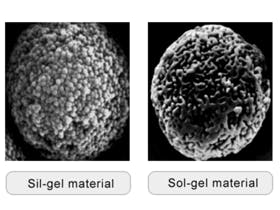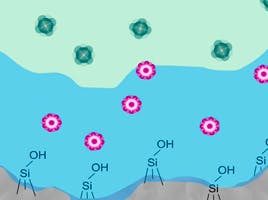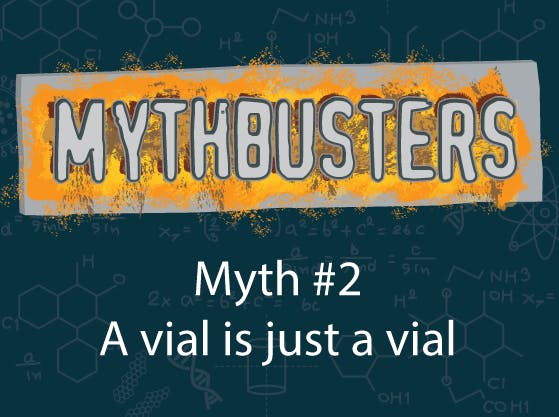
10 Jan 2022
MythBusters: If my HPLC runs out of mobile phase, the column will dry up and become damaged.
Every social group develops its own traditions, sagas, lore and mythos: the stories and beliefs, assumptions, and urban legends that define a shared culture, and even a sense of belonging. Chromatographers are generally sensible types, but we are not immune to fireside stories!

In a new series of short articles, we are going to put some folk tales to the test and will try to see which ones hold up to scrutiny, and which ones are best left for water cooler chitchat.
Myth #1: If my HPLC runs out of mobile phase, the column will dry up and become damaged
We all have done it, and some of us more than once. That moment when you walk into the lab and realise that you underestimated the amount of eluent you needed to run your sequence. At some point in the night, the HPLC run out of mobile phase and a bunch of samples (you don’t even know how many, yet) never ran. If you’re lucky, they won’t be too degraded and you’ll be able to inject the vials again… let’s hope so.
To add insult to injury, the pumps have been running on empty for who knows how long, and the column is bound to be completely dry, probably destroyed beyond repair. This is not how you pictured your day!
It is a very common belief, and something that I have been asked many times, surely the column cannot survive something like this? Can it be reconditioned? How? Will it ever get back to its previous state? Let’s look into it…
The following diagrams illustrate the operating principle of a modern HPLC pump: an electric motor drives a piston (generally made of sapphire or ceramic material) in and out of metal, ceramic, or PEEK piston chamber.

Figure 1: Reciprocating piston pump during filling stroke. See Reference 1 for interactive video.
During the first half of the cycle – the filling stroke – the piston pulls mobile phase from the solvent reservoir and fills the chamber. A “piston seal”, made of rigid plastic, tightly seals the gap between the piston and the chamber to ensure that no air is sucked in.

Figure 2: Reciprocating piston pump during delivery stroke. See Reference 1 for interactive video.
During the second half of the cycle – delivery stroke – the eluent is compressed by the piston. The piston seal ensures that the pressurised liquid does not leak out of the chamber, and is pushed instead towards the rest of the HPLC system: autosampler, column, and detector.
To ensure that the liquid flows as described, and not in the opposite direction, two additional elements are required: the inlet and outlet check valves. These are small cylindrical devices housing a small ball (in some designs, less than a millimetre in diameter) made of ruby or ceramic.
During the filling stroke, the suction generated by the piston is sufficient to lift the minuscule inlet valve ball, which “floats” in the mobile phase as it streams into the piston chamber. Meanwhile, the same suction forces the outlet ball to firmly seal the bottom of the outlet valve, preventing the downstream mobile phase from returning into the piston. On the delivery stroke, the building pressure rapidly pushes the inlet valve ball downwards, closing the valve and preventing the eluent from flowing back. The outlet valve ball, on the other hand, is forced to open, allowing the eluent to escape. Variations of this design are universally employed in analytical and preparative scale chromatography systems because it is simple yet very effective at pumping liquids.
But it is hopeless at pumping gases, and we experience that almost daily when air bubbles get lodged in the inlet check valve: the ruby ball is so light that the air bubble can prevent it from seating correctly on the ball seat during the delivery stroke. As a result, the mobile phase backflows and we get a sudden drop in flow and pressure.
Take the CHROMacademy module, HPLC Solvent Pumping Systems, for free with Lite membership.
During the filling stroke, the suction generated by the piston is sufficient to lift the minuscule inlet valve ball, which “floats” in the mobile phase as it streams into the piston chamber. Meanwhile, the same suction forces the outlet ball to firmly seal the bottom of the outlet valve, preventing the downstream mobile phase from returning into the piston. On the delivery stroke, the building pressure rapidly pushes the inlet valve ball downwards, closing the valve and preventing the eluent from flowing back. The outlet valve ball, on the other hand, is forced to open, allowing the eluent to escape. Variations of this design are universally employed in analytical and preparative scale chromatography systems because it is simple yet very effective at pumping liquids.
But it is hopeless at pumping gases, and we experience that almost daily when air bubbles get lodged in the inlet check valve: the ruby ball is so light that the air bubble can prevent it from seating correctly on the ball seat during the delivery stroke. As a result, the mobile phase backflows and we get a sudden drop in flow and pressure.

Figure 3: Air bubble lodged in a check valve, preventing the valve from closing
Fortunately (as we have been told) we place our solvent bottles high above the HPLC pump: the hydrostatic pressure created by the column of liquid will generally dislodge the air bubble in the next pump cycle, and the flow will be restored. Nothing more than a glitch in the baseline, after all.
But what if we have run out of mobile phase? Air will fill the piston chamber, whether fully or just partially. With every stroke, the piston compresses the air but doesn’t create enough force to open the outlet check valve: the air is trapped in the piston chamber and can’t go any further! The rest of the HPLC, except for the odd bubble above the outlet check valve, will remain completely filled with (now stagnant) mobile phase. It is mechanically impossible for the air to reach the column, the pump simply doesn’t work that way.
Instead of fretting about the column, you should worry about the piston and the piston seal which, without the lubricating effect of the mobile phase, have been wearing out for hours. If your mobile phase contained buffers, it is even possible that small crystals have damaged the piston, the seal, or both. Inspect them carefully and replace them if necessary. And stop worrying about the column.
So, the myth of the column drying up when the HPLC runs out of mobile phase is officially… BUSTED!




